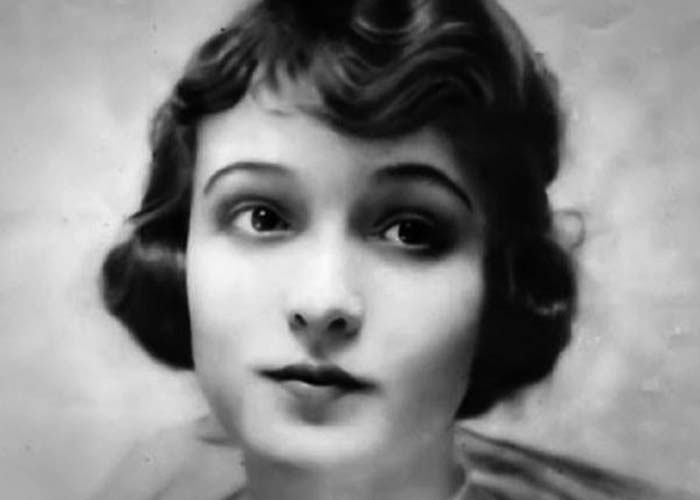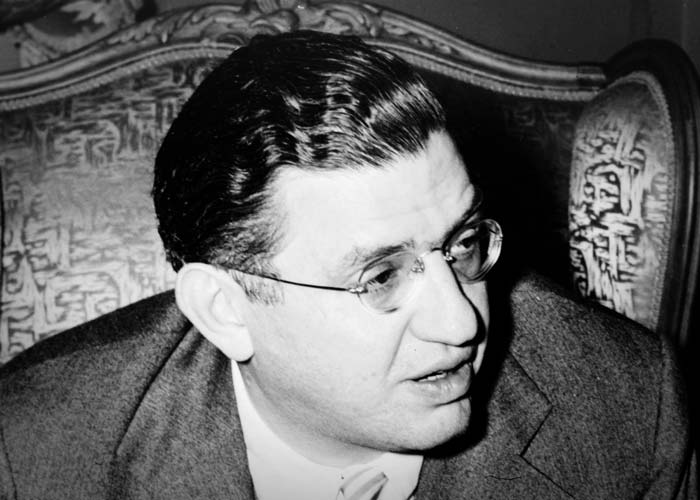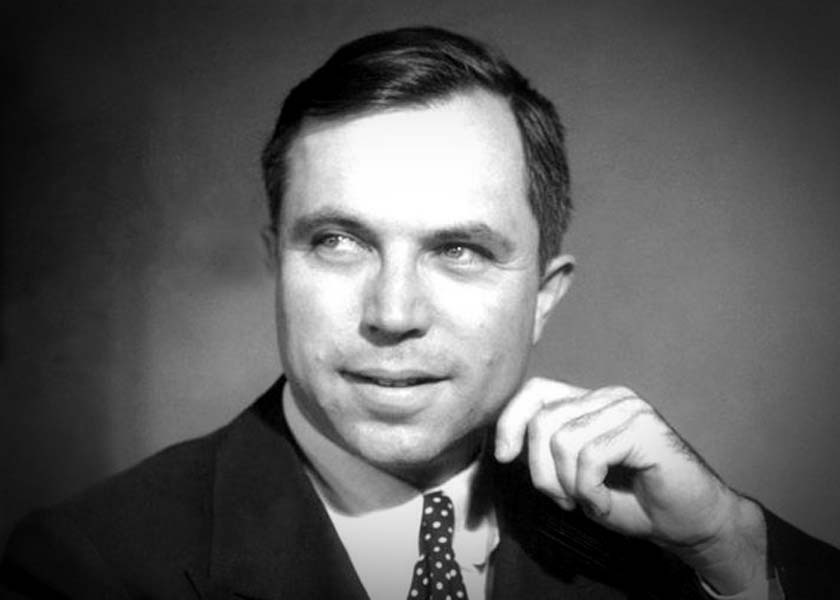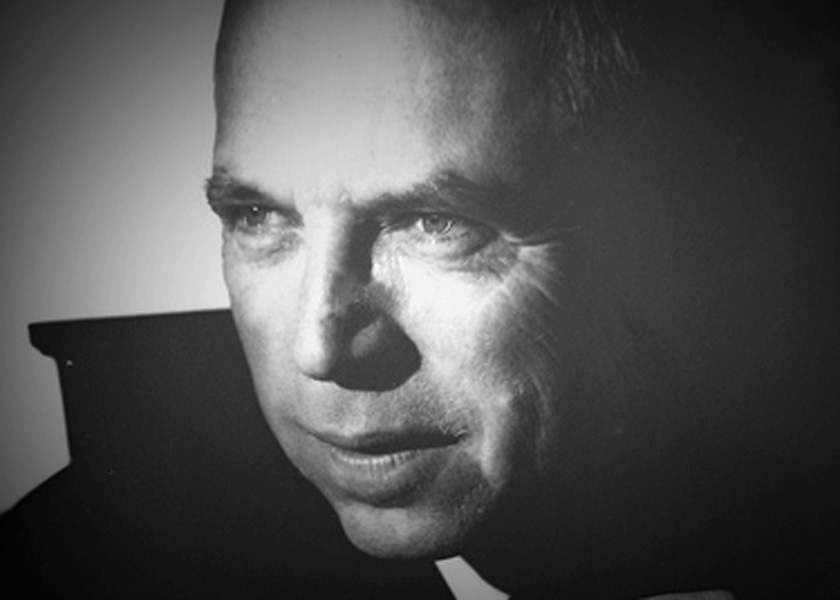Early Career
King Wallis Vidor was born on February 8, 1894 in Galveston, Texas. His grandfather immigrated to Texas from Hungary in the 1850s. As a teenager, Vidor worked at a local movie theater as a projectionist and ticket taker. Around the age of twenty, he began shooting local newsreel footage and selling it to interested parties. In 1913, Vidor made a film version of the Great Galveston hurricane of 1900, which he survived, and later wrote about in Esquire Magazine in 1935. He also shot a military parade.
In 1915, Vidor married a Houston girl, Florence Arto, and they moved to Hollywood. Through the influence of popular film actress Corinne Griffith, Florence and King became active in the movies. Florence rose rapidly from small parts to leading lady. She appeared in films for the Fox Corporation, Jessie L. Lasky, and Famous Players Lasky. During the late 1910s, she co-starred with Sessue Hayakawa in several films.

King Vidor began his film career writing stories and scripts for small film companies and as an extra (notably in Intolerance). In 1919, King Vidor began to direct his own scenarios for a small, independent production company, Brentwood Film Corporation. He made his directorial debut with The Turn in the Road (1919) with Lloyd Hughes and Helen Jerome Eddy, who were both relatively unknown at the time. In his early films, Florence was frequently used as the leading lady. Also featured in these films were several performers beginning lengthy careers, notably Zaza Pitts, Roscoe Karns, David Butler and Ben Alexander.
In 1919, Vidor signed with First National, a new production company. First
National had been founded in 1918 by a group of exhibitors who wanted to produce
their own product. Under their banner, he built a studio called Vidor Village. He
began his independent career by publishing a Creed and Pledge
in
Variety. He pledged to produce pictures which promoted the advancement of
humanity and did not portray fright, suggest fear, or glorify evil.
From
1920 to 1922, King Vidor Productions and Florence Vidor Productions released a
series of films starring Florence and directed by Vidor, including
Jack-Knife Man (1920), Real Adventure (1922), and
Conquering the Woman (1922). An exception in this period is
The Sky Pilot, an ambitious film shot on location in the Sierra
Nevada, which was produced by the Cathrine Curtis Corporation (CCC). CCC had been
founded in 1919 by Cathrine Curtis, a pioneer woman film producer.
In 1923, through Encore Productions, Vidor presented Florence in Alice Adams (1923) under the direction of Rowland V. Lee. This film was the final collaboration between Florence and King Vidor before their divorce in 1924. As his association with Florence ended, Vidor Village also closed. Vidor, who had previously directed films for Metro Pictures Corporation and Goldwyn Pictures, then joined their newly organized merger: Metro-Goldwin-Mayer (MGM). He was producer and director of his first feature for MGM, Wine of Youth (1924), which starred his future second wife, Eleanor Boardman, to whom he was married from 1926 until 1931.
The Big Parade & The Crowd
As the silent film was reaching its artistic apex, Vidor developed an ambitious goal. He wanted to make a movie which would be seen by a large part of the global population, a movie based on one of three subjects of great importance to humanity: steel, wheat, or war. Vidor chose war, and the result, The Big Parade (1925), starring John Gilbert, was one of the greatest successes of its era, remains a milestone of silent cinema, and is one of the most important films of the war genre. Its success made Vidor one of the most important directors in Hollywood.
Following The Big Parade, he made two more pictures with Gilbert: La Boheme (1926), with Lillian Gish, and Bardelys the Magnificent (1926). Having made seven movies in only three years, Vidor then slowed his pace and did not release another film until 1928. That film, The Crowd (1928), would be Vidor's crowning achievement, one of the most famous and acclaimed silent films of all time.
The Films With Marion Davies
In his autobiography, A Tree is a Tree (1952), King Vidor writes that after the success of The Big Parade he was selected by newspaper magnate William Randolph Hearst to direct actress Marion Davies, who was also Hearst's mistress. Davies starred in Vidor's final silents, The Patsy (1928) and Show People (1928).
Both films were successful artistically and commercially, and Show People is often considered to be Davies' finest film. Vidor considered Davies an accomplished comedienne and enjoyed their working relationship. They collaborated a third time for the talking picture Not So Dumb, released in 1930.
Hallelujah
As the sound era began, Vidor proposed to expand the subject matter of American movies. He wanted to bring the lives of African-Americans to the screen, and, as the vehicle, he proposed a musical. This film, starring African-Americans, would reflect their culture, character traits, and behavior. His outlook on these subjects was undoubtedly influenced by the racial stereotypes of the time and his upbringing in Galveston, Texas. By putting his own salary into the project, he received funding from MGM. Filming conditions on location were difficult, and the sound was dubbed-in later. The result of his efforts was Hallelujah (1929), a unique product for a major studio. This film and Our Daily Bread (1934) represent his most personal efforts in the talking era, and reflect his continued interest in realistic portrayals of the human condition. However, neither film performed commercially, due to their subject matter and limited releases.
Early Talkies
After Hallelujah, Vidor returned to more standard fare. His initial talkies were derived from several sources. His third feature with Marion Davies, and her first talkie, Not So Dumb (1930), was adapted from a play by George Simon Kaufman and Marc Connelly, well known playwrights of the time. Street Scene (1931) was also adapted from a popular play. Billy the Kid (1930), Vidor's first Western since The Sky Pilot, was based on Vidor's adaption of a novel by Walter Noble Burns.
Vidor scored a major commercial success with The Champ (1931), starring Wallace Berry, for which Vidor was credited as producer and director. The picture won the 1932 Academy Awards for Best Actor (Beery) and Best Original Screenplay, and was nominated for Best Picture and Best Director. Whatever meaning these accolades may have had for him, Vidor does not even mention this film in A Tree is a Tree.
In the early and mid 1930s, Vidor directed a variety of films for different producers. Cynara (1932), The Wedding Night (1935), and Stella Dallas (1937), all for Samuel Goldwyn, are heavy dramas with contemporary settings. Bird of Paradise (1932), for David O. Selznick, is South Seas exotica. So Red the Rose (1935), for Douglas MacLean, is a Civil War drama. Vidor met his third wife, Elizabeth Hill, while she worked as script girl during filming of Bird of Paradise. They were married for fifty years.
Starting with Our Daily Bread, Vidor worked for ten years as producer, director and writer for his own King Vidor Productions. These films were released by MGM, and their casts include Robert Donat, Spencer Tracy, and Clark Gable. Our Daily Bread is a personal statement about the hardships and strengths of working people during the Great Depression. Vidor saw the story as an extension of the lives of the couple from The Crowd. During this time, he also made The Citadel (1938), Northwest Passage (1940) and Comrade X (1940).
Duel in the Sun & Late Career

In the mid-1940s, Vidor started a western for producer David O. Selznick. From the
beginning, Selznick intended an epic western, in which the strong passions of the
characters would play out against the vast spaces of the West. Selznick was
determined to spare no expense, and the film, Duel in the Sun (1946),
continuously grew in cast, crew, story, and number of scenes. Vidor and Selznick
disagreed during production, and other directors (mostly uncredited) also worked
on the picture. As Vidor states in his autobiography,
Duel in the Sun
was just about the most super-duper Technicolor feature ever made.
After
completion of the troubled and exhausting production, Vidor did not direct again
until 1948.
In the late 1940s, he directed three films for Warner Brothers:
The Fountainhead (1949), Beyond the Forest (1949), and
Lightning Strikes Twice (1951). In his autobiography, he casually
mentions these films as assignments in which he became involved.
Despite
Vidor's implied dismissal of the film, the content and meaning of
The Fountainhead, based on the book by Ayn Rand, has been discussed
and evaluated since its release.
Despite his earlier difficulties with David O. Selznick, Vidor agreed to direct Ruby Gentry (1952) for him, and later cited it as one of his favorite works. Vidor felt that he drew a very successful performance from the star, Jennifer Jones. Vidor may also have been happy with this picture because David Selznick did not interfere with the production. After another break, Kirk Douglas invited Vidor to direct a western, Man Without a Star (1955), for his production company, Bryna Productions. Vidor's last commercially released projects were two large-scale international films, War and Peace (1956) and Solomon and Sheba (1959), produced, along with many other epic films of the mid-1950s helmed by veteran directors (including Anthony Mann, Howard Hawks and George Stevens), to lure audiences away from their televisions. Except for two small projects, Vidor ceased directing after Solomon and Sheba.
Vidor had been at the highest level of his profession for forty years. He started as a writer, began producing and directing before 1920, easily made the transition to talkies, and was directing major projects until his retirement. Recognition was accorded him throughout his career. He was nominated five times for the Best Director Academy Award, though he never won. He received his first Academy Award nomination for Best Director in 1929, for the The Crowd, and his last in 1957, for War and Peace. Although he did not win the Oscar for War and Peace, he was awarded Best Director of 1956 for the film by the Directors Guild of America and the Hollywood Foreign Press Association (Golden Globe Award). In 1979, Vidor was awarded an honorary Academy Award for Incomparable Achievements as a Creator and Innovator. He also received career achievement recognition from the Los Angeles Film Critics in 1977, The Moscow International Film Festival in 1979, and The Venice Film Festival in 1982. He has a star on the Hollywood Walk of Fame at 6741 Hollywood Blvd.
Vidor wrote his autobiography A Tree Is A Tree in 1953 (revised
1981). The ironic title refers to a conversation Vidor had with a producer who
thought that location shooting was unnecessary since
a rock is a rock and a tree is a tree.
During the 1960s, he wrote, produced
and directed two short documentaries. He became interested in the unsolved 1922
murder of director William Desmond Taylor. He researched the crime, and supposedly
had an extensive file of materials, but he never publicly disclosed his findings.
In his later years, he lived in Paso Robles, California, a bucolic area of hills
and small farms. He died there in 1982 at age 88.

Career Consideration
King Vidor had a long and successful career. His career began at the time when
feature films, as opposed to short subjects, had become the dominant method of
film production. Besides directing, he was often involved in writing and producing
his films. His diverse body of work includes westerns, comedies, contemporary
domestic dramas, historical subjects, and spectacular epics. He made an early
commitment to examining the condition of humanity. His Creed and Pledge
,
published in Variety promised to make films which examined the human
condition, were true to human nature, based on the principles of right,
and
would not portray evil except to prove the fallacy of its line.
After he
become a director at MGM, he told producer Irving Thalberg that he wanted to make
films about the universal topics war, wheat, or steel.
From this point, his
films contained an element of humanism, with compassion and understanding for the
lives of their characters. His characters are not strongly individualized, but
reflect average people, whose goals are universal: to grow, to build, and,
sometimes, to destroy. The acting and writing of these films stressed adherence to
truthfulness in reflecting human thought and action. Vidor portrayed the better
qualities of human nature and examined the results of immoral actions. Among his
many films which contain these elements, The Crowd,
Hallelujah, and Our Daily Bread are his most personal
statements about the human condition.
Vidor's approach to filmmaking is straightforward. The camera observes the actions of the characters, but it is not used as a means of interpretation or comment. His men and women are observed clearly and are shown without deception or artifice. Their motives and activities are obvious, and the results of their actions are directly presented to the viewer. Vidor mastered all aspects of silent filmmaking, including acting, lighting, story and pacing. His masterpieces of this period are The Crowd, The Big Parade, and Show People. The Crowd demonstrates the ideals proclaimed in his Pledge and is a movie of great humanity, warmth, and truth, examining of the life experiences of a middle class couple, but one pair amongst many. The Big Parade is a film of large and small scale, showing the experiences of soldiers in WWI, but focusing on the romance of a doughboy and his French sweetheart. It is a first rate film, funny, warm, exciting, and moving. His silent comedies with Marion Davies are delightful.
Vidor believed talkies opened new directions for subject matter. His first talkie, Hallelujah, was an attempt to extend film subject into the lives of African-Americans using only African-Americans in the cast. This is a remarkable film to have been produced by a major studio in 1929, but it had limited public appeal and could not be shown in the South. Studios wanted films which made profits. After Hallelujah, Vidor worked on more marketable material. His films of the 1930s are varied, solid, and workmanlike, but do not rise to the level of his late silent features, despite the Academy Award nominations they garnered. For one thing, he seems to have lost his path after the silents. His talkies cannot be easily characterized, since they are a mishmash of story types and themes without any seeming focus. The one unifying aspect of these films is the treatment of the humanistic characters, which remains similar throughout his career.
For many directors, and for movie-making in general, the pre-Hayes Code talkies are very different from those made post-Code, but somehow Vidor's films remained the same. Perhaps his approach to movies did not change with the transition to sound because the topics he cared about never changed. Thus, he never really adopted the pace and feel of the best talkies, despite remaining a popular A-list director for his entire career. After Our Daily Bread, King Vidor seemingly had no issues left to address, so his direction of subsequent films is professional, but lacking in a certain spark. Therefore, Vidor's most interesting and best movies are his silents and early talkies, despite his continuing success until his retirement. This might also explain the gaps in his later career, as he accepted movies offered to him, but did not attempt to seek out new projects.
Further Reading

